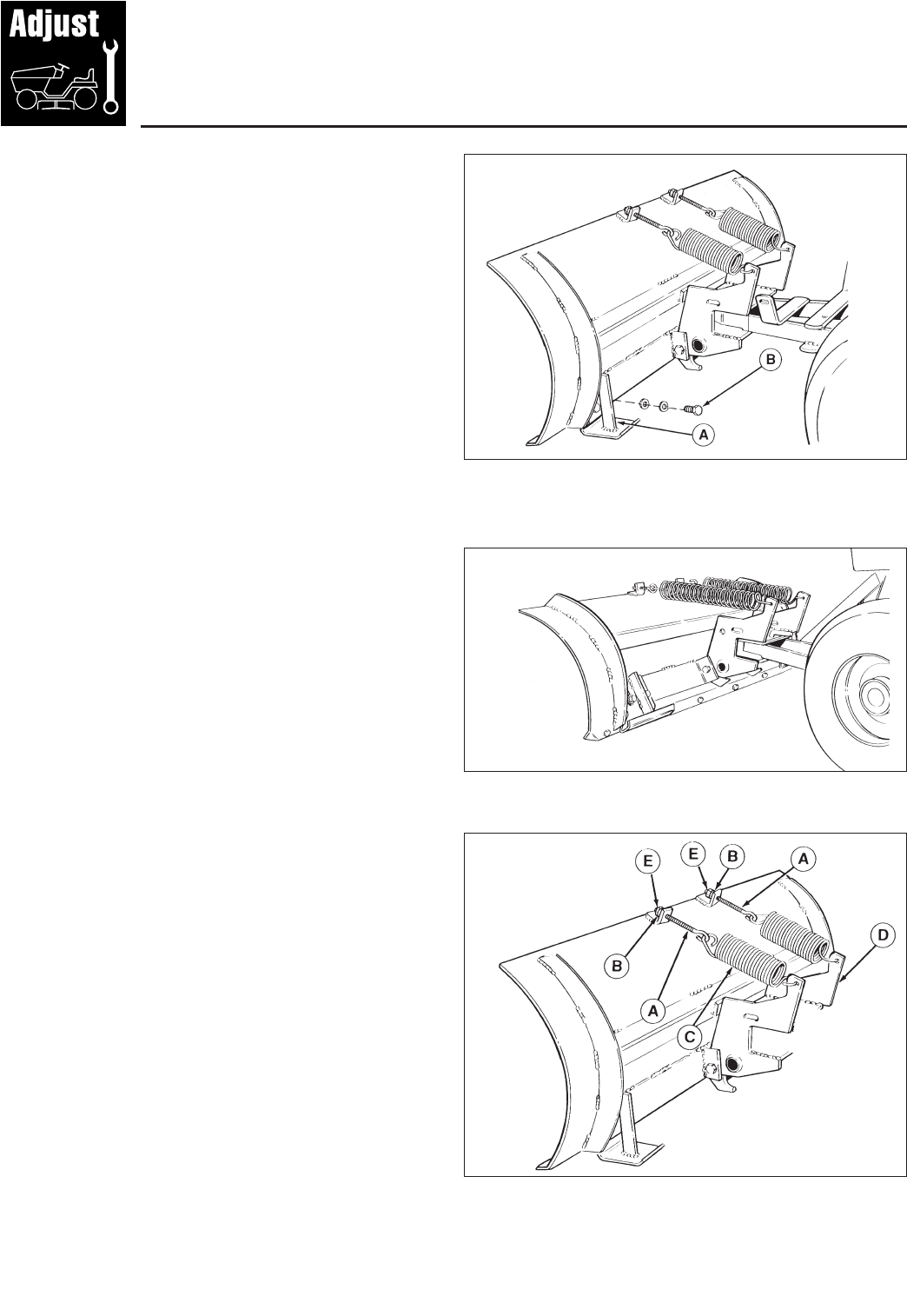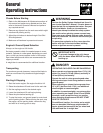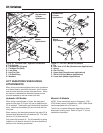
7
Adjustments
Skid Shoe Adjustment
Slotted holes are provided to permit adjustment of the
shoe assemblies for raising and lowering the blade to
various working heights (see Figure 3).
When cleaning snow from gravel or earth drives or
walks, the shoe assemblies should be lowered fully to
prevent blade contact with gravel or ground. When
cleaning smooth hard surfaces like concrete, the shoe
assemblies are normally placed fully up to allow the
blade to scrape the surface.
To adjust the skid, raise the blade off the ground and
block with a piece of wood. Loosen the bolts (B, Figure
3) and move the skid shoes (A) up or down to desired
height. Tighten the bolts securely.
Figure 3.
A. Skid Shoes
B. Bolts
Spring Tension
See Figure 4. This snow plow/dozer blade is spring
loaded so that when the blade strikes a solid object, the
springs will allow the blade to release as shown, rather
than cause damage. The blade will go back to its original
position after object is cleared.
Figure 4. Dozer Blade “Released”
Figure 5. Tension Springs
A. Eyebolt D. Pivot Frame
B. Nut, 5/16 E. Nut, 5/16
C. Spring
See Figure 5. To adjust spring tension hold rear nut (B)
and loosen front nut (E). Tighten rear nut (B) to increase
spring tension, or loosen to decrease tension.
For initial adjustment, tighten nut (B) on each eyebolt
enough to expose about 3/4" (19mm) of thread. Tighten
front nut (E) against rear nut (B) to lock adjustment in
place.


















